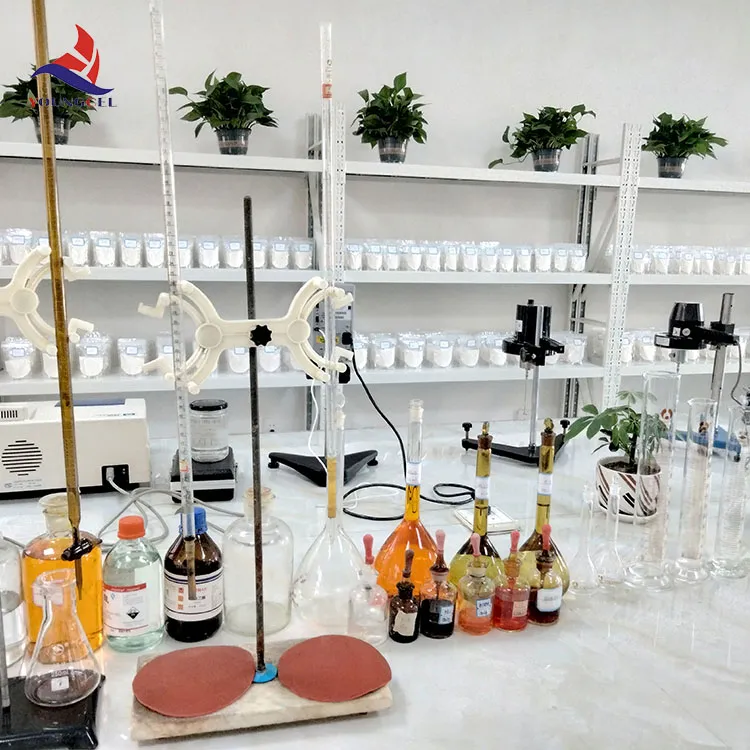Understanding HPMC Ether Properties and Applications
Hydroxypropyl Methylcellulose (HPMC) ether is a versatile cellulose derivative widely used across various industries due to its unique properties. This article delves into the characteristics of HPMC ether, its manufacturing process, and its multifaceted applications.
Properties of HPMC Ether
HPMC ether is known for its excellent water retention, emulsifying properties, and thickening abilities. This semi-synthetic polymer is derived from cellulose and modified through etherification processes, which involve the reaction of cellulose with propylene oxide and methyl chloride. The result is a white or off-white powder that is odorless and tasteless.
One of the most significant attributes of HPMC ether is its solubility in water. Depending on its chemical composition and substitution patterns, it can dissolve in both hot and cold water, forming a clear, viscous gel. This property makes it particularly valuable in applications where a smooth texture and consistent viscosity are desired.
Additionally, HPMC ether is chemically stable, resistant to acids and bases, and does not gel or form a precipitate. These attributes render it suitable for various applications ranging from food products to pharmaceuticals.
Applications of HPMC Ether
The applications of HPMC ether are extensive and diverse, spanning several sectors
hpmc ether

1. Pharmaceuticals HPMC ether is commonly used as a binder in tablet formulations, enhancing the cohesion of powder mixtures and ensuring uniformity. It also acts as a controlled-release agent, allowing for the gradual release of active ingredients into the bloodstream. Furthermore, its ability to form a film makes it suitable for coatings that protect sensitive compounds from environmental factors.
2. Food Industry In the food sector, HPMC ether serves as a thickening agent and emulsifier. It improves the texture and stability of products such as sauces, dressings, and bakery goods. It is also employed in gluten-free formulations, where it enhances the binding capacity of ingredients, creating desirable textures.
3. Construction HPMC ether is an essential component in the construction industry, particularly in the formulation of adhesives, sealants, and mortar. Its water-retention properties help in prolonging the workability of cementitious materials, ensuring better adhesion and durability.
4. Cosmetics and Personal Care In cosmetic formulations, HPMC ether is utilized as a thickener and stabilizer, contributing to the desired viscosity of creams, lotions, and gels. It offers an elegant feel on the skin and helps in dispersing active ingredients evenly throughout the product.
5. Agriculture In agriculture, HPMC ether is used in various formulations, including herbicides and fertilizers, where it acts as a stabilizer and helps in controlling the release of active ingredients, improving their effectiveness.
Conclusion
In summary, HPMC ether is a remarkable ingredient known for its wide-ranging applications across different industries. Its unique properties, including excellent water retention, solubility, and stability, make it a valuable additive in pharmaceuticals, food products, construction materials, cosmetics, and agricultural formulations. As industries continue to evolve, the demand for HPMC ether is likely to grow, underscoring its indispensable role in modern formulations. Understanding its properties and potential applications is crucial for innovation and development in various fields.
-
Rdp Powder: Key Considerations for Wholesalers in the Building Materials IndustryNewsJul.08,2025
-
Key Considerations for Wholesalers: Navigating the World of Hpmc - Based ProductsNewsJul.08,2025
-
Hpmc Detergent: Key Considerations for WholesalersNewsJul.08,2025
-
Key Considerations for Wholesalers: China Hpmc For Tile Adhesive, Coating Additives, Concrete Additives, and MoreNewsJul.08,2025
-
Crucial Considerations for Wholesalers: Navigating the World of Construction MaterialsNewsJul.08,2025
-
Key Considerations for Wholesalers Sourcing Additive For Cement, Additive For Concrete, Additive For Putty from Additive Manufacturer Shijiazhuang Gaocheng District Yongfeng Cellulose Co., Ltd.NewsJul.08,2025




